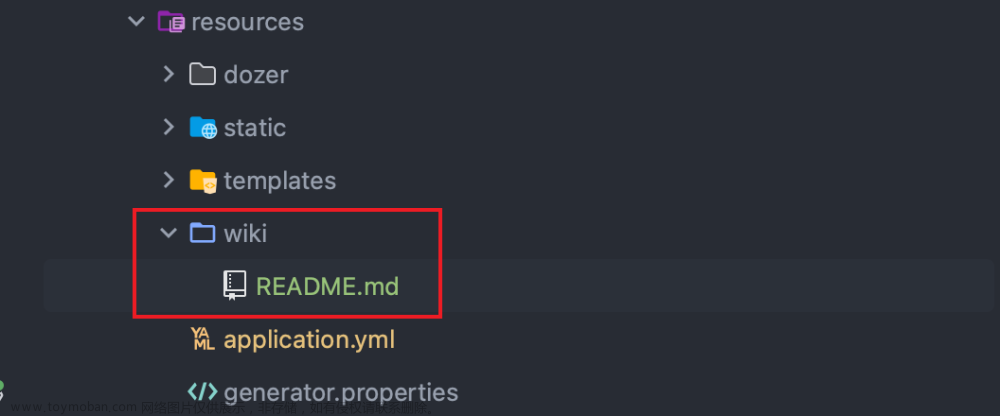Spring Boot 3项目集成Swagger3教程
🌟 前言
欢迎来到我的小天地,这里是我记录技术点滴、分享学习心得的地方。📚
🛠️ 技能清单
- 编程语言:Java、C、C++、Python、Go、
- 前端技术:Jquery、Vue.js、React、uni-app、Echarts
- UI设计: Element-ui、Antd、Color-ui
- 后端技术:Spring Boot、Mybatis-plus、Swagger
- 移动开发:Android
- 操作系统:Windows、Linux
- 开发框架:RuoYi、微信小程序
- 开发工具:VSCode、IDEA、Eclipse、WebStorm、HbuildX、Navicat、Xshell、Android Studio、Postman
- 数据库技术:MySQL、Redis、SQL Server
- 版本控制:Git
Swagger是一个用于设计、构建、记录和使用RESTful web服务的开源软件框架。Swagger 3(OpenAPI 3.0)提供了更加强大和灵活的API文档生成能力。本教程将指导您如何在Spring Boot 3项目中集成Swagger3,并使用Knife4j作为UI界面。
1. 添加依赖
首先,您需要在项目的pom.xml文件中添加Swagger3的依赖。同时,为了确保依赖能够正确下载,您可以添加阿里云的Maven镜像仓库。
<!--swagger3-->
<dependency>
<groupId>com.github.xiaoymin</groupId>
<artifactId>knife4j-openapi3-jakarta-spring-boot-starter</artifactId>
<version>4.1.0</version>
</dependency>
<repositories>
<!--阿里云镜像-->
<repository>
<id>alimaven</id>
<name>aliyun maven</name>
<url>https://maven.aliyun.com/nexus/content/groups/public/</url>
<releases>
<enabled>true</enabled>
</releases>
<snapshots>
<enabled>true</enabled>
</snapshots>
</repository>
</repositories>
2. 配置Swagger
在Spring Boot项目中创建一个配置类SwaggerConfig,并添加Swagger的配置信息。
import io.swagger.v3.oas.models.ExternalDocumentation;
import io.swagger.v3.oas.models.OpenAPI;
import io.swagger.v3.oas.models.info.Contact;
import io.swagger.v3.oas.models.info.Info;
import io.swagger.v3.oas.models.info.License;
import org.springframework.context.annotation.Bean;
import org.springframework.context.annotation.Configuration;
@Configuration
public class SwaggerConfig {
@Bean
public OpenAPI springShopOpenAPI() {
return new OpenAPI()
.info(new Info().title("标题")
.contact(new Contact())
.description("我的API文档")
.version("v1")
.license(new License().name("Apache 2.0").url("http://springdoc.org")))
.externalDocs(new ExternalDocumentation()
.description("外部文档")
.url("https://springshop.wiki.github.org/docs"));
}
}
3. 实体类和控制层注解
在您的实体类和控制层中使用Swagger注解来描述API。
// 实体类注解示例
import com.alibaba.excel.annotation.ExcelProperty;
import com.alibaba.excel.annotation.write.style.ColumnWidth;
import io.swagger.v3.oas.annotations.media.Schema;
import lombok.AllArgsConstructor;
import lombok.Builder;
import lombok.Data;
import lombok.NoArgsConstructor;
import lombok.experimental.Accessors;
import java.util.Date;
@Data
@Builder
@NoArgsConstructor
@AllArgsConstructor
@Accessors(chain = true)
@Schema(name = "Employee", description = "$!{table.comment}")
public class Emp {
@ExcelProperty("ID")
@Schema(description = "ID")
private int id;
@ExcelProperty("用户名")
@Schema(description = "用户名")
private String names;
@ExcelProperty("工资")
@Schema(description = "工资")
private double salary;
@ExcelProperty("生日")
@Schema(description = "生日")
private Date birthday;
@ColumnWidth(20)
@ExcelProperty("头像")
@Schema(description = "头像")
private String photo;
// @ColumnWidth(20)
// @DateTimeFormat("yyyy-MM-dd HH:mm:ss")
// @JsonFormat(pattern = "yyyy-MM-dd HH:mm:ss")
// @ExcelProperty("创建日期")
// private Date u_create_time;
}
// 控制层注解示例
import io.swagger.v3.oas.annotations.Operation;
@Operation(summary = "获取所有员工信息")
@GetMapping("/selectAll")
public List<Emp> selectAll() {
// ...
}
4. 通用返回结果封装
创建一个通用的返回结果类,用于统一API的响应格式。
import io.swagger.v3.oas.annotations.media.Schema;
import lombok.AllArgsConstructor;
import lombok.Builder;
import lombok.Getter;
import lombok.Setter;
import lombok.extern.slf4j.Slf4j;
@Builder(toBuilder = true)
@AllArgsConstructor
@Setter
@Getter
@Slf4j
public class Result<T> {
/**
* 提示信息
*/
@Schema(description = "提示信息")
private String message;
/**
* 是否成功
*/
@Schema(description = "是否成功")
private boolean success;
/**
* 返回状态码
*/
@Schema(description = "返回状态码")
private Integer code;
/**
* 数据
*/
@Schema(description = "数据")
private T data;
public Result() {
}
public static Result success() {
Result Result = new Result();
Result.setSuccess(Boolean.TRUE);
Result.setCode(ResultCode.SUCCESS.getCode());
Result.setMessage(ResultCode.SUCCESS.getMsg());
return Result;
}
public static Result success(String msg) {
Result Result = new Result();
Result.setMessage(msg);
Result.setSuccess(Boolean.TRUE);
Result.setCode(ResultCode.SUCCESS.getCode());
return Result;
}
public static Result success(Object data) {
Result Result = new Result();
Result.setData(data);
Result.setSuccess(Boolean.TRUE);
Result.setCode(ResultCode.SUCCESS.getCode());
Result.setMessage(ResultCode.SUCCESS.getMsg());
return Result;
}
/**
* 返回失败 消息
*
* @return Result
*/
public static Result failure() {
Result Result = new Result();
Result.setSuccess(Boolean.FALSE);
Result.setCode(ResultCode.FAILURE.getCode());
Result.setMessage(ResultCode.FAILURE.getMsg());
return Result;
}
/**
* 返回失败 消息
*
* @param msg 失败信息
* @return Result
*/
public static Result failure(String msg) {
Result Result = new Result();
Result.setSuccess(Boolean.FALSE);
Result.setCode(ResultCode.FAILURE.getCode());
Result.setMessage(msg);
return Result;
}
public static Result failure(Integer code, String msg) {
Result Result = new Result();
Result.setSuccess(Boolean.FALSE);
Result.setCode(code);
Result.setMessage(msg);
return Result;
}
public static Result failure(String msg, ResultCode exceptionCode) {
Result Result = new Result();
Result.setMessage(msg);
Result.setSuccess(Boolean.FALSE);
Result.setCode(exceptionCode.getCode());
Result.setData(exceptionCode.getMsg());
return Result;
}
/**
* 返回失败 消息
*
* @param exceptionCode 错误信息枚举
* @return Result
*/
public static Result failure(ResultCode exceptionCode) {
Result Result = new Result();
Result.setSuccess(Boolean.FALSE);
Result.setCode(exceptionCode.getCode());
Result.setMessage(exceptionCode.getMsg());
return Result;
}
/**
* 返回失败 消息
*
* @param exceptionCode 错误信息枚举
* @param msg 自定义错误提示信息
* @return Result
*/
public static Result failure(ResultCode exceptionCode, String msg) {
Result Result = new Result();
Result.setMessage(msg);
Result.setSuccess(Boolean.FALSE);
Result.setCode(exceptionCode.getCode());
return Result;
}
}
5. 注解说明
Swagger3的注解与Swagger2有所不同,以下是一些常用注解的对照表:
| Swagger2注解 | Swagger3注解 | 注解位置 |
|---|---|---|
| @Api | @Tag(name = “接口类描述”) | Controller类上 |
| @ApiOperation | @Operation(summary = “接口方法描述”) | Controller方法上 |
| @ApiImplicitParams | @Parameters | Controller方法上 |
| @ApiImplicitParam | @Parameter(description = “参数描述”) | Controller方法上 |
| @ApiParam | @Parameter(description = “参数描述”) | 方法参数上 |
| @ApiIgnore | @Parameter(hidden = true) 或 @Operation(hidden = true) | - |
| @ApiModel | @Schema | DTO类上 |
| @ApiModelProperty | @Schema | DTO属性上 |
6. 访问Swagger UI
启动您的Spring Boot应用后,您可以通过以下地址访问Swagger UI:
http://localhost:8080/doc.html
http://localhost:8080/swagger-ui/index.html
在这里,您可以查看API文档,测试API接口,并获取相关信息。
🚀 获取源代码
- 后端案例:https://gitee.com/bestwishes0203/Front-end-example
- 前端案例:https://gitee.com/bestwishes0203/Back-end-example
📌 联系方式
如果您对我们的项目感兴趣,或者有任何技术问题想要探讨,欢迎通过以下方式与我联系。我非常期待与您交流,共同学习,共同进步!文章来源:https://www.toymoban.com/news/detail-854678.html
- 邮箱:2109664977@qq.com
- Gitee:https://gitee.com/bestwishes0203
- GitHub:https://github.com/bestwishes0203
- CSDN:https://blog.csdn.net/interest_ing_/
- 个人博客:访问我的博客
🎉 结语
感谢你的访问,如果你对我的技术文章或项目感兴趣,欢迎通过以上方式与我联系。让我们一起在技术的道路上不断前行!🚀文章来源地址https://www.toymoban.com/news/detail-854678.html
到了这里,关于Spring Boot 3项目集成Swagger3教程的文章就介绍完了。如果您还想了解更多内容,请在右上角搜索TOY模板网以前的文章或继续浏览下面的相关文章,希望大家以后多多支持TOY模板网!












